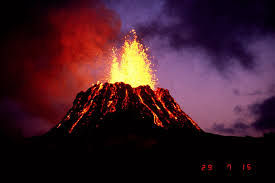Hawaiian Volcano Observatory Office Falls Prey to DOGE Cuts
- Alexa Levitt

- May 20
- 2 min read
Founded in 1912, the Hawaiian Volcano Observatory’s (HVO's) mission is “to monitor, investigate, and assess hazards from active volcanoes and earthquakes in Hawaii, issue warnings, and advance scientific understanding in order to reduce impacts of volcanic eruptions.” They provide the island’s Civil Defense Agency with valuable information that saves lives, as they did during the 2018 Kīlauea eruption, and continue to do during the current eruption. The residents of Hawai’i have come to depend on the reports made by the HVO. Despite their life saving research, the Department of Government Efficiency (DOGE) is planning to terminate the lease on the HVO’s headquarters in Hilo.
After an earthquake in 2018 left the previous HVO headquarters unstable, the HVO has been operating out of the old Ironworks Building on Kamehameha Avenue in Hawai’i. The Ironworks building is only a temporary arrangement; a new building is being built.

This new building is being built on the campus for the University of Hawai’i, and construction is scheduled to finish in 2028. However, the Ironworks building showed up on two lists of offices scheduled for early lease termination. The HVO office is one of many offices DOGE scheduled for closure, in order to save money.
The lease is scheduled now to end on September 30, 2025, but could close sooner. This poses problems for the HVO, since they must move their equipment, which could cost quite a lot of money. In addition to having to move the equipment, they need a place to house them, in order to continue their research. Ken Hon, the lead scientist at the observatory, told a Hawai’i County Civil Defence Administrator that they would function as they did during the pandemic. During the pandemic, the scientists worked from home, remotely accessing the necessary information. However, during the pandemic, they had a place to store their equipment, even if they couldn’t physically access them.
Despite these challenges, the scientists at HVO remain committed to their mission. Hon also told the Administrator that “there will be no hiccups in their monitoring and reporting.” Despite promises to continue their research, concerns have been raised about how the HVO can continue to work.
The citizens of Hawai’i rely on the HVO to provide them with information about potential safety hazards, such as gas emissions and Pele’s hair (strands of volcanic glass). The HVO helps keep residents and tourists safe. If the HVO can not provide safety information, Hawai’i could become a much more dangerous place.

Comments